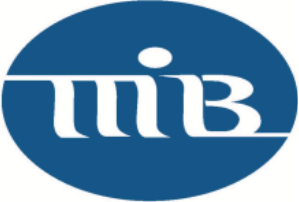With the right tools, financial institutions can overcome new challenges.
Financial institutions are facing margin pressure from continued low-interest rates, a decline in traditional fee income and increasing competition from new financial players. That has made diversifying revenue streams with noninterest-income sources even more important.
In its 2021 Financial Institutions Finance and Technology Trends survey, Syntellis Performance Solutions found that more than half of respondents expected their financial institution’s profitability to decline or remain flat in 2021.
Banks are facing a variety of challenges that could be tempering expectations. Those challenges include:
- Digital transformation — The COVID-19 pandemic shifted consumer expectations for purchasing methods and digital experiences, from food delivery to remote work. Consumers want the same personalized, convenient experience from their financial institutions. However, many banks aren’t equipped with the data, analytics and artificial intelligence needed to deliver those experiences.
- Interest rates — In 2020, financial institutions saw a dramatic plunge in interest rates, which affected loan yields and added significant margin pressure. Overall, U.S. bank profits fell 36.5% in 2020 compared to 2019. Revenue may not recover for two to four years, testing financial institutions’ operational resilience.
- Tightening regulations — Fee income was already in decline, but that dip has accelerated amid increasing regulatory scrutiny around penalty fees, including those for overdrafts.
Identify Market Opportunities
The shifts in the market present significant challenges, but not all the changes are grim. Positive changes include:
- Influx in deposit balances — Many consumers saved relief and stimulus money and had a surplus due to reduced discretionary spending. That left financial institutions with high cash levels they can lend against at a lower cost compared with borrowed funds.
- Drop-in provision for credit losses — Pandemic-level loan-loss provisions were often generous. As people return to work, there is a reduced risk of default, so financial institutions can recapture large amounts of loan-loss reserves.
- Active homebuying market — Purchase originations in 2021 are on pace to increase 16% to a record $1.67 trillion. Increased origination fees can drive yields.
- Accelerating card use and contactless payment adoption — The pandemic drove more people to use cards and contactless payments. Globally, nearly eight in 10 people surveyed in 2020 said they were using some form of contactless payment, including tap-and-go credit cards and mobile wallets such as Apple Pay, according to consumer polling by Mastercard. Increased card use presents the opportunity for fee generation as an additional source of noninterest income.
Analyze Revenue Possibilities
Based on the current environment, financial institutions have several opportunities to develop strategies to survive and thrive:
- Accelerate the shift to contactless and digital payments with flexible personalization options
- Enable merchants with digital capabilities to create omnichannel experiences
- Modernize infrastructure to enable faster, secure cross-border payments
- Encourage simpler, more accessible payment options for the underbanked and unbanked
- Consider revitalizing your loan programs
Fee-based income can be a helpful offset against weaker net-interest income. And with the move to digitization, wire income, ACH fee income, and ATM and debit card interchange fee income are all expected to continue to rise. Additional opportunities could come from increases in fee income in other loan-related areas, as well as from wealth management.
Understand Profitability Analysis Tools
Profitability analysis can help financial institutions assess revenue mix and evaluate the changes that drive the most value. But it’s important to have the right technology to support accurate and timely analysis to identify promising revenue streams.
Advanced profitability analysis tools provide views of separate components — such as net-interest income, provision, noninterest income and expenses — from a summary level. They also can drill into specific details.
Relationship-based pricing for new business is another example of leveraging best-of-breed technology. Pricing tools capture the most up-to-date assumptions while leveraging funds-transfer pricing solutions to project forward-looking profitability.
Comprehensive reporting capabilities can enable financial institutions to create a wide variety of reports, analyses and data visualizations to gain insight into potential profitability drivers. For example, dynamic visualizations can be used to support profitability analysis. With that type of visual, banks can isolate a particular area of focus, such as noninterest income, to see its role in calculating the return on assets.
Relationship-based pricing for new business is another example of leveraging best-of-breed technology. Pricing tools capture the most up-to-date assumptions while leveraging funds-transfer pricing solutions to project forward-looking profitability.
Financial institutions can model pricing scenarios in real time by applying different combinations of loan terms, fees and deposit requirements. They also can consider changing factors such as customer risk profiles, loan provision requirements, and capital allocation to best balance client needs with institution goals.
Turn Challenges Into Success Stories
The past year introduced many challenges for the banking industry. Reducing loan-loss provisions, ramping up mortgage lending, and progressing toward digitizing card and cashless transactions can help financial institutions turn those scenarios into opportunities.










